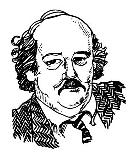(Syndicated to Kansas newspapers Nov. 4, 2013)
 For us Statehouse hangers-on, this is the week that we get our first look at what’s going to happen in the upcoming election-year session of the Legislature.
For us Statehouse hangers-on, this is the week that we get our first look at what’s going to happen in the upcoming election-year session of the Legislature.
It’s when we get the Consensus Revenue Estimate of just how much in tax revenues the state is likely to see for the rest of this fiscal year that we’re just four months into and the next fiscal year.
That estimate of revenues not only will tell the governor how much money is available for the budget for the next—and last—fiscal year of his current term in office, it will tell the Legislature how fast revenues are falling and whether the purpose of those tax cuts that reduce revenues is being met…the spurring of more economic activity in Kansas.
Everyone expects that the state’s upcoming fiscal year will show a cut in revenues to the state—that was the whole purpose of the massive tax cuts approved by the Legislature in 2012 and reshaped a dab in last spring’s session.
That known, it’s what Kansans are doing with the extra money they’re keeping that is the real question. Remember, we’ve all heard about the giant cuts, even elimination of state income taxes for some forms of corporations, but also just regular income tax payers got some fairly nice income tax reductions, too.
It’s what happens to that money that isn’t being paid to the state that is the real key here. Will it be possible for the state’s financial experts to project that money that isn’t being spent on taxes is being spent on machinery or equipment or in stores or on new houses or what? That shift in spending by Kansans—when it shows up in new non-income tax revenue—will be what we’re looking for.
That looking into the future is what will determine how much money the state has to spend on, for example, K-12 and higher education or to lure more people and jobs to the state in the upcoming fiscal year.
And that look into the future may also tell us just what last year’s tax bill does to the state. Remember, in 2012, lawmakers cut taxes too much, and threatened to starve the state. This year, lawmakers, while still humming the “cut taxes” tune, made up some of those earlier cuts by reducing by 30 percent the value of the income tax deduction that we have for years claimed for interest paid on mortgages and in property taxes.
Legislators called that a “haircut” but the effect was to make living in a home more expensive, and probably buying that new home trickier when mortgage lenders did their paperwork and decided that reducing the tax break for home ownership meant that you qualified for a smaller mortgage loan than you expected.
This week, we ought to see how all that plays out: Whether more free cash for some means more spending on things that are taxable, tempering the first full year of income tax cuts by generating more money from sales or liquor or cigarette or other taxes. And, of course, whether reduced revenues mean less spending by the state on things that you are interested in.
